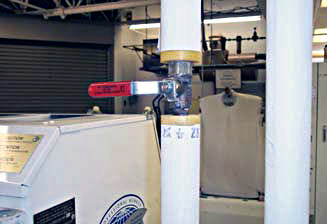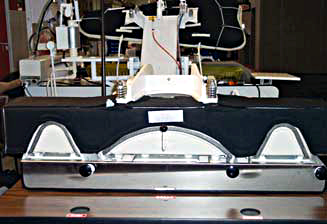With energy costs reaching astronomical heights, no wonder cleaners are looking for ways to stretch every penny. The good news is there are a few simple ways to save energy in the plant. Some will cost nothing except your time to put them in operation. Others will involve only modest investments but will yield very profitable returns in the months and years ahead. Here are eight ways to immediately improve your plant’s energy efficiency.
Fix All Leaks
Walk into any plant after all the pressers have stopped working, and you’ll hear it—the “hiss” of money flying out the window. Air leaks, steam leaks, and dripping faucets are all huge wastes of money. Fix all leaks as soon as possible. Some fixes are as simple as a slight tightening with a screwdriver or a quarter turn of a wrench. As the price of fuel and energy goes up, so does the cost of leaks. Examine all puff irons, hand irons, and shut-off valves, since these are often the culprits. Leaks can also make for slippery floors, which can cause slips and falls.
Turn Off Unused Equipment
Steam-heated equipment uses almost as much steam when it’s not in use as it does in use. Maintaining steam to individual pieces of equipment not in use or to sections of the plant not in operation wastes money. If you have flat work ironers that are seldom used, shut them down. Drapery presses and steam tables should also be shut off. If the dry cleaner works later than the pressers, be sure the presses can be cut off. Most steam-heated equipment comes equipped with some sort of shut-off valve. If not, shut-off valves are fairly simple to install.

Let the Boiler ‘Coast Down’
The only expense this fuel saver will cost is a bit of your time. The average boiler retains enough steam to operate laundry and dry cleaning equipment satisfactorily for 5–15 minutes after it has been shut down. As the boiler “coasts down,” steam pressure drops. It will take some experimentation to determine the right time for your plant without affecting quality. A 15-minute “coast down” per day equates to 75 minutes per week for a five-day workweek. Those are 75 minutes the boiler will not be using fuel.
Check Start-Up Times
Another piece of advice: Check the start-up times to confirm the appropriate amount of time needed to furnish adequate steam pressure for the plant. Too often, a full head of steam is online an hour before processing begins, and a full hour of energy is wasted.
Insulate Hot Pipes and Surfaces
Many plants have pipe insulation missing or have never covered their pipes or other hot surfaces. Don’t be shortsighted. Insulation not only saves fuel dollars but also reduces the inside plant temperature, which is very important, particularly in the summer weather. Payback time for steam pipes varies from about six months to two years.

OSHA has a rule that all hot pipes within seven feet from the floor must be insulated. As anyone who has worked in a plant knows, this rule is important for obvious safety reasons. Covering all hot pipes will make the plant more comfortable and save fuel dollars.
Don’t just consider steam pipes, though. What about the equipment? Dry cleaning and laundry presses generate considerable amounts of heat as well. Why not insulate them too? There are now insulated press covers available to fit presses of all different shapes, sizes, and manufactures.
Maintain Boiler Efficiency
Boilers operating at less than peak efficiency waste the fuel that fires them. Most boilers in use today can be expected to perform at an average of 80% efficiency. The fuel air mixture of the burner typically causes the malfunction.
Have a qualified boiler technician check the boiler efficiency at least once a year. If you are using natural gas, many gas companies will test the efficiency by checking the boiler stack exhaust gases and adjusting the burner accordingly. Diligent boiler maintenance reaps big fuels savings, so it pays to know the boiler efficiency.
Repair or Replace Bad Steam Traps
Can you see the steam blowing out the roof of your plant from miles away? Does your boiler shut down because it suddenly ran out of water? The culprit could be bad steam traps.
Let’s face it: bad or leaky steam traps are a part of life, and every plant has them. Steam traps are designed to draw in condensation and steam from equipment, condense the steam back into hot water, and return this hot water back to the return tank. If large amounts of steam are blowing from the exhaust or your boiler is frequently shutting down with no water, check your steam traps. Chances are one or several of the traps are malfunctioning.
Methods for checking steam traps include using heat sensitive paper, a wax stick, or laser tester. The key to a properly working trap is the temperature difference. The outlet side of the trap should be at least 75° cooler than the inlet side. This assures you the trap is properly converting the steam into water. A temperature reading with a difference of less than 75° is a sign that steam—and consequently, money—is blowing through the trap and out the roof. For maximum trap life and steam economy, establish a regular schedule for trap testing. Be certain to include the often-overlooked trap at the end of the steam header.

Relocate Air Compressor Air Intake
The air compressor is often found in the boiler room, where the temperature could average 100° F. If your air intake for the compressor is in such a room, give your air compressor a break and run the air intake to the outside air. The cooler air outside is compressed more efficiently, reducing the load on your compressor. The less the compressor runs, the less money you spend.
This change involves running a pipe to the nearest convenient place on an outside wall or roof. Be sure of two things: 1) that the end of the pipe has an L facing down so that rain and snow don’t get in the pipe, and 2) that this extension allows the air to go through the air filter of the compressor.
Conclusion
With these few simple energy-saving modifications you will notice almost immediate results. If you are willing to invest a little time and effort, you’ll quickly see that you don’t need to spend a fortune to save a fortune.
This article is from DLI’s TOI-709

